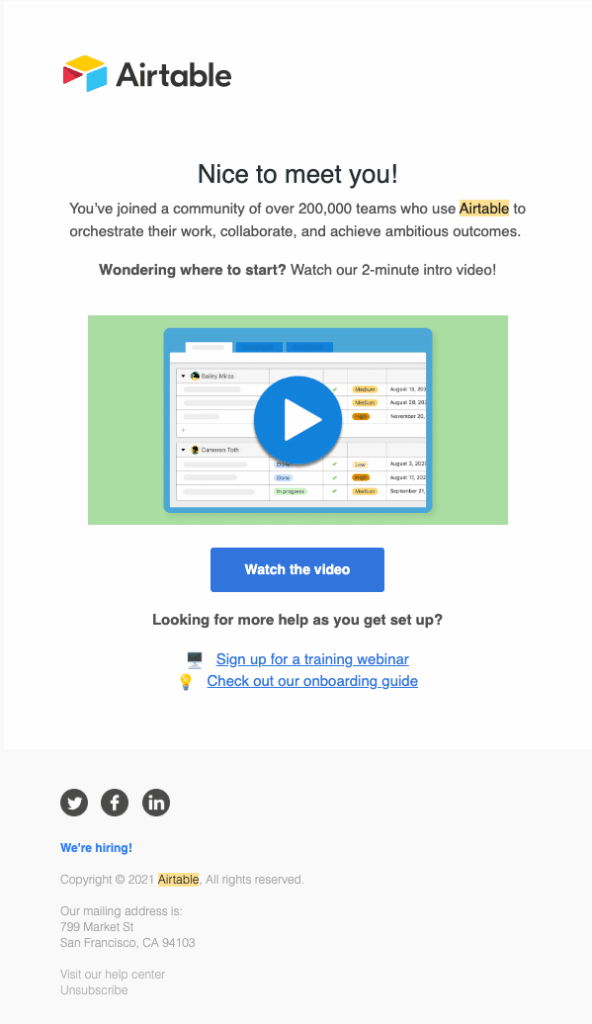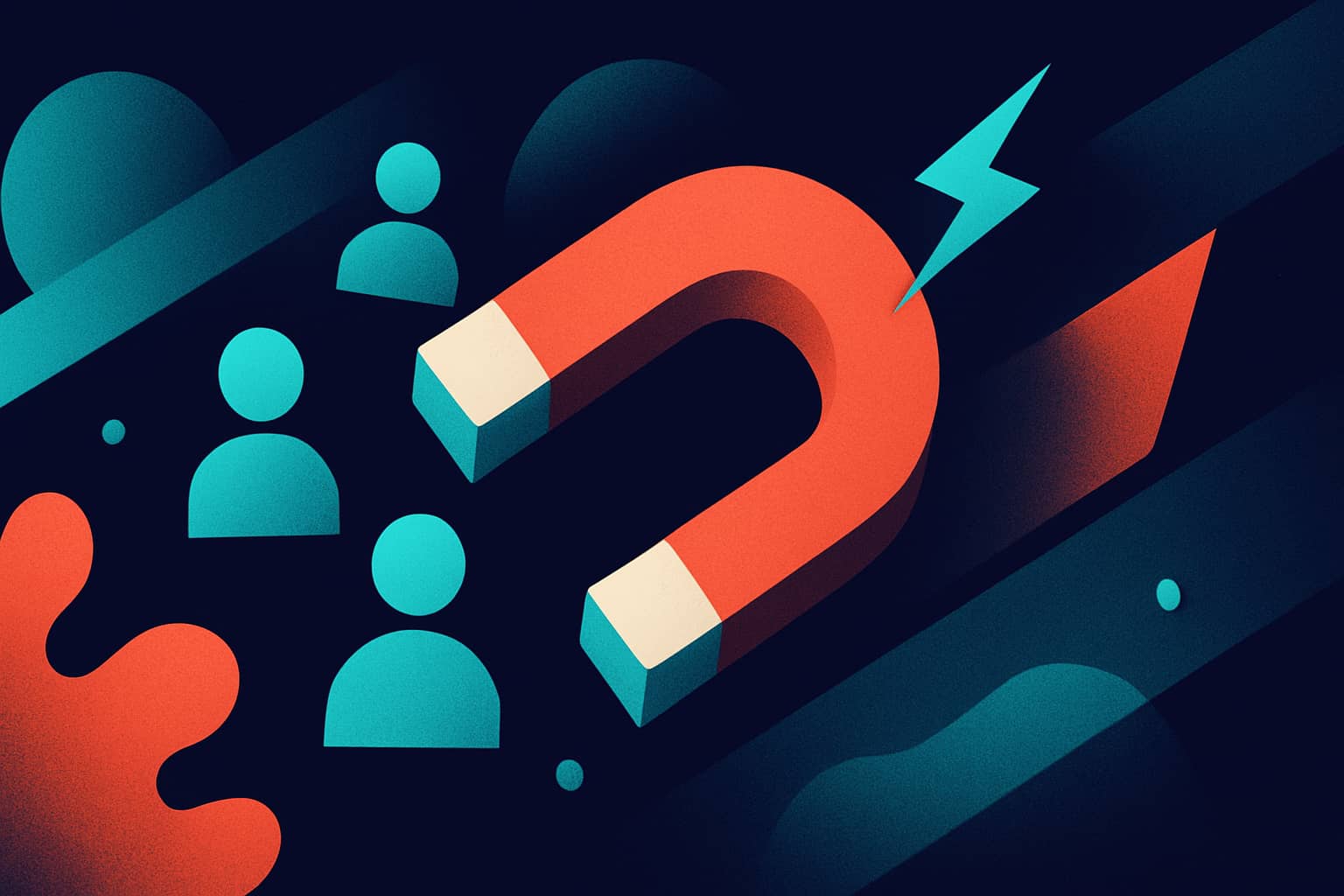In 2022, the average annual churn rate for products in the WordPress ecosystem was around 30%. That’s almost triple the annual churn rate of the average SaaS business. Ouch.
Losing subscribers to churn forces you to constantly replace them just to maintain revenue. High churn rates can also stall growth. If you’re adding new customers at the same rate others cancel, your business will plateau.
But the opposite is also true—reducing churn can drive growth long-term, and it’s often one of the easier ways to do so!
In this article, I draw on the research of subscription and revenue growth expert Robert Skrob to explore 15 proven strategies for reducing churn and igniting growth for WordPress businesses.
1. Segment your best customers to find more like them
The best thing you can do as a WordPress company is to figure out who your most devoted and high-value customers are and market to them more.
How? Analyze common traits of long-term customers to develop ICPs (ideal customer profiles) that inform your marketing and optimize your targeting.
Top customers don’t tend to be randomly distributed across demographics and sectors. They often cluster. Look for the patterns. If you don’t have enough data, a simple customer survey is a good starting point!
2. Focus on outcomes: People pay for transformation, not features
Consider the difference between a WordPress plugin that minifies CSS and JavaScript (whatever that means) and one that speeds up your site so you rank better in Google and lose fewer customers.
One offers features. The other offers outcomes.
Too many WordPress companies focus their messaging around features. Lists and lists of features and obscure technical terms that many end users aren’t even familiar with.
Instead, do research to understand what customers are trying to accomplish with your products, the problems that they need to solve, and center your messaging around that.
3. Communicate ongoing value
Customers often churn when they don’t perceive enough value to justify renewal. And when a competitor appears to offer more, it’s another reason for them to cancel their subscription.
You can counter this by consistently demonstrating value. Share changelog highlights, send newsletters with new features or use cases, share case studies and tutorials, and send renewal reminders that recap benefits delivered (e.g., “10 new features, 5 updates this year”).
Even a public roadmap can further reinforce transparency and commitment.
4. Reframe pricing as a premium investment
The difference between how customers respond to your pricing is often due to how it’s framed. Low prices often signal low value and attract low-quality subscribers.
Price is a signal, not just a number. It communicates expectation, commitment, and value. Position yourself as the category leader, not the cheapest option.
According to Baremetrics, there’s a correlation between higher average revenue per user (ARPU) and lower churn. Customers in the $250+ cohort show the lowest churn rates, suggesting that higher-value customers may be more committed (though this doesn’t necessarily prove causation).
5. Frame your subscriptions in terms of benefits
Too often, WordPress companies promote subscriptions in terms of what the customer will receive: support, updates, special offers, exclusive community access. These are fine to mention, but they don’t answer the real question every customer has: what does this do for me?
Instead, translate subscription features into tangible benefits and communicate them often:
- Support → Peace of mind: “Get expert help whenever you need it, so you never waste hours stuck on a problem.”
- Updates → Security and performance: “Stay protected against vulnerabilities and enjoy new features as soon as they’re ready.”
- Special offers → Long-term savings: “Unlock discounts and bonuses that make your subscription pay for itself.”
- Exclusive community → Faster growth: “Get insider advice from the people using the products, so you can grow your site with confidence.”
6. Ensure your subscription tiers reflect a logical upgrade path
One of the most important aspects of pricing strategy is designing a clear upgrade path. This prevents customers from ‘outgrowing’ your product and leaving.
With this in place, you can build an intelligent upsell system. The subscriber ready for advanced features shouldn’t have to search for them. The system should recognize readiness and present opportunity.
You can do this through collecting detailed usage data, monitoring feature requests, and engaging with customers via community groups, forums or livestreams.
This opens the door to intelligent email automations, in-product messaging, and targeted outreach that offer seamless and timely upgrade offers.
7. Stop chasing tactics without a clear strategy
Although we want our products to appeal to as many customers as possible, the truth is that not every customer is your customer. Universal appeal is an unrealistic and unattainable goal.
It’s common for smaller WordPress companies to dive into marketing tactics without a clear strategy. This can result in wasted marketing spend that attracts customers who are a poor fit for your products and thus increases churn rates.
A well-defined strategy, on the other hand, clarifies who you want to serve, how you position your offerings, what value you deliver over time, and how you differ from competitors. With that foundation in place, you can be sure you’re acquiring the right customers and keeping them for the long term.
8. Build a community, not a customer base
Customers don’t stick around for features alone. They stay when they feel part of something bigger.
A strong community gives them support when they’re stuck, inspiration when they’re building, and a place to share wins with others who get it. The result is more than satisfied customers: you create loyal advocates who provide value for others and market your product for you.
Today, it’s easier than ever to bring people together, whether through a private Facebook group, a dedicated Slack workspace, or a simple forum on your site.
9. Rethink the number of yearly sales and discounts that you run
The logic is pretty simple: having constant sales and promotions attracts deal-seekers, not committed subscribers. If someone’s primary motivation is saving money, they’re more likely to leave when the discount ends.
In the WordPress ecosystem, we’ve trained consumers to wait for Black Friday, to abandon carts for coupon codes, and to treat plugin/theme subscriptions as something to cancel and resubscribe based on immediate need.
While it may be too late to change this, it’s still worth rethinking how many sales and promotions you have each year (along with the effort it takes to run them!) and whether they are adding value to your business or constraining your growth potential.
10. Test different pricing strategies
Pricing isn’t just about revenue, it shapes the type of customers you attract. Higher prices can signal quality and bring in more committed buyers (like agencies, for example). Lower prices, on the other hand, may create doubt about value. The only way to know what works for your audience is to test different options.
Run split tests with different price points and keep them live for at least 2–4 weeks to gather meaningful data. Then let the numbers guide your decision. When it comes to pricing, trusting your gut can easily lead you astray!
11. Focus on education, before and after purchase
People don’t buy what they don’t understand, and they don’t stay with what they can’t use. Education removes friction before the sale and builds confidence after it. When customers feel capable, they get more value from your product and are far less likely to churn.
- Offer resources for different learning styles: video tutorials, documentation, webinars, and quick-start guides
- Design onboarding that guides step by step instead of overwhelming users with too many options
- After acquisition, keep education ongoing through regular newsletters, live workshops and community groups
12. Reduce time to value after purchase
Once someone buys your product, your top priority is helping them experience value as quickly as possible. That means guiding them toward an immediate, meaningful win.
Don’t confuse setup with success. Installing a plugin isn’t a win. A win is achieving something they couldn’t do yesterday: whether that’s adding a contact form to their site, setting up a staging environment, or designing a high-converting landing page.
The sooner customers see real outcomes, the more likely they are to stick around!
13. Ensure new customers are guided toward the best first actions
Part of reducing time to value is guiding customers toward the right first actions. This usually starts with the “Welcome” email. While it may feel like a formality, it’s one of the most important pieces of your onboarding.
The ideal welcome email is personal (emails with a personalized subject line are 22% more likely to be opened), concise (skip the filler “welcome aboard” copy), action-oriented, and above all, helpful! Include only what a new customer needs to get started. For example:
- A direct link to your quick start guide
- A link to core educational content such as documentation or an academy resource
- Support channels and details
- Their license key or login details
Here’s a welcome email from Loom for their Slack integration. It’s concise, with three clear steps for the customer to follow, and provides two important links to key resources.

Here’s Airtable’s welcome email. It’s short, concise and action-oriented. The reader is automatically drawn to the video thumbnail inviting them to watch a 2-minute intro video. Below that are two additional links to other important educational resources. Textbook!

14. Run targeted win-back campaigns
Don’t assume that a churned customer is gone forever. Automated win-back campaigns can bring people back, especially if they left because the product didn’t meet their needs at the time.
A strong win-back sequence might include:
- Updates on recent features, improvements and roadmap items
- A limited re-entry price or discount
- Social proof that shows how others are succeeding with your product
- Personalized messaging that speaks to why they left in the first place
If you do offer special pricing, make reactivation effortless. A single click from an email should restore their subscription. The goal is to eliminate friction!
15. Turn content into connection
Content isn’t just a way to explain features. Done well, it builds trust, reinforces a customer’s decision to choose your product, and helps them reach their goals.
- Tutorials and how-to guides
Practical, step-by-step resources help users succeed faster. When customers can quickly solve problems and unlock new value, they feel supported and stick around longer. - Case studies
Real success stories drive both conversion and retention. A case study that highlights transformation not only inspires potential customers but also reassures existing ones that they made the right choice. - Physical mailers
Consider experimenting with tangible items to create stronger emotional connections. A printed newsletter, or even a simple sticker can turn a digital transaction into a long-lasting relationship. - Live Q&As or workshops
Real-time interaction increases perceived value. Live, unscripted sessions are a prime way to build trust and human connection.
Wrapping up
I believe that reducing churn is the result of many small, deliberate optimizations across pricing, onboarding, education, and content.
How many of these strategies are you already using, and where can you improve?
